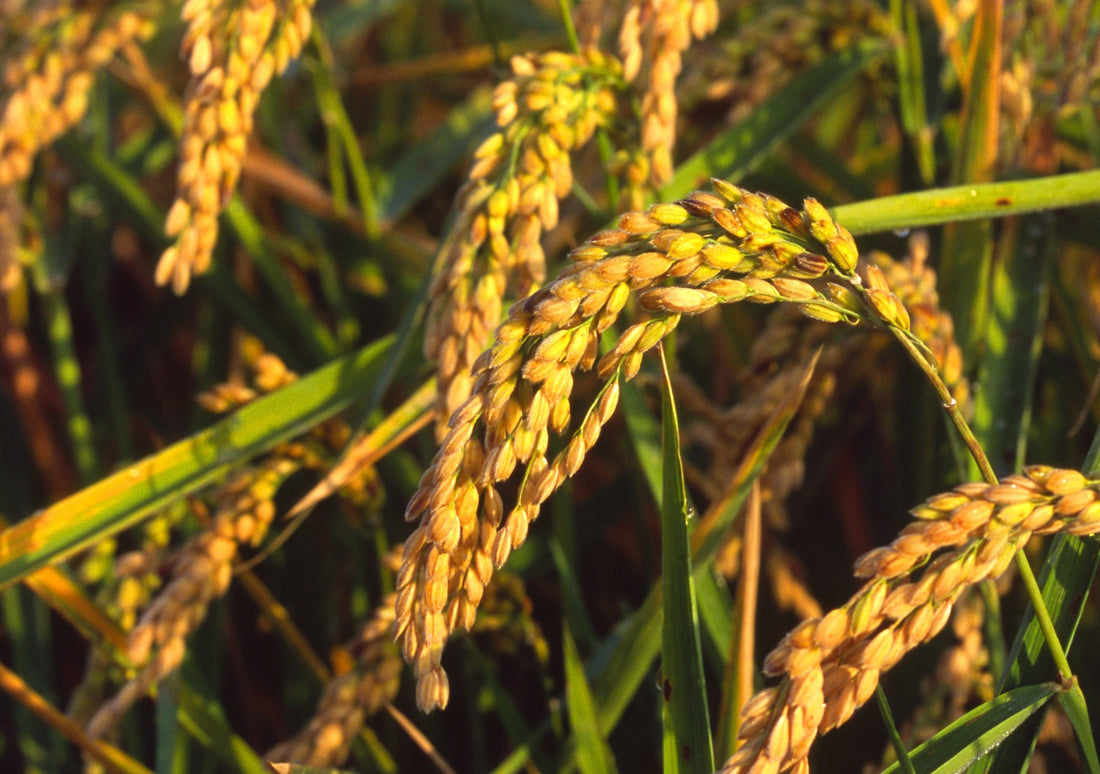The cultivation of rice in Valencia is not only a centuries-old tradition but also a cultural, ecological, and gastronomic engine of the region. Valencian rice is born in the Albufera Natural Park, one of Europe’s most valuable wetlands, where water, earth, and tradition come together to create one of the most treasured ingredients in Mediterranean cuisine.
That’s why the rice that arrives at your table with A Fuego has a story that begins long before the recipe. It’s an ancestral process that still marks the rhythm of life in Valencia’s fields. Today we’ll walk you through the cycle of Valencian rice cultivation, month by month—from the water and the earth, all the way to your table.
Keep in mind that the dates we share may vary slightly each year depending on climate, rainfall, and temperature, which can speed up or delay the different stages of rice farming.
The cycles of Valencian rice cultivation
Field flooding (Perellonà)
November – January
Once the harvest is complete, the fields are flooded again. This phase, known as invernada (wintering) or perellonà, is a traditional practice in which the land is slowly refilled with water through gates and canals like those of El Perelló, El Perellonet, and La Gola del Puchol. In doing so, the lagoon regains its medieval breadth.
It’s not just rest, it’s regeneration. The water oxygenates the soil, cleans it, and naturally helps control pests. This age-old practice is also key to maintaining the ecological balance of La Albufera.

L’eixugà and Fangueo (Fanguejà) – Preparing the fields
February – early March
After the perellonà, the gates are opened again to let the water drain slowly until the fields dry completely.
This is followed by the fanguejà, a traditional agricultural task where the soil is churned, today with machinery, but in the past with animals, leaving it ready for planting. This preparation is crucial to guarantee a sustainable and high-quality Valencian rice harvest.

Rice sowing
Mid-March – April
Sowing can be done in different ways: in many fields, planes scatter seeds from the air, while in others it’s done manually in small plots called planters. The seeds are spread over the flooded fields and soon begin to germinate. This marks the official beginning of the rice’s life cycle.
Germination and growth
April – July
After sowing, the rice begins to sprout. Tender shoots rise above the water, gradually painting the fields green.
During this stage, farmers carefully manage water levels, protect the banks, and monitor for pests. It’s a delicate part of the Valencian rice cycle, when the quality of the future grain is determined.

Maturation
July – August
By summer, the rice reaches maturity. The plants dry out, the panicles harden, and the fields turn into a golden sea.
This is the final stretch of the cycle—months of work and care condensed into grains ready for harvest.

Harvest (Segada)
Late August – October
It’s finally harvest time. Tractors and machinery enter the fields to collect the rice with precision. Once gathered, the rice is dried, cleaned, and sorted. This is the end of its journey in the field… and the beginning of its journey in your kitchen with A Fuego.
But the rice doesn’t arrive alone. It comes with carefully chosen ingredients designed to enhance its flavour and make each dish unforgettable.
And the cycle begins again
When November arrives, the fields of La Albufera are flooded once more, and the land rests. A new cycle of Valencian rice cultivation begins—deeply tied to the traditions of local farmers, always in harmony with nature and the seasons.
This is where the rice we use at A Fuego is born: the Albufera variety, with Protected Designation of Origin Valencia. This grain, descended from the Bomba and Senia varieties, stands out for its firm texture and its ability to absorb the broth’s flavour without losing its essence.
We choose it for its origin, its quality, and everything it represents. Because at A Fuego, we believe cooking well also means respecting where our food comes from.
Every recipe starts here, in the fields of La Albufera, with centuries of history behind it. And it ends where it matters most: at your table, shared with the people you love.
And if you want to take that authentic flavor to the next level… learn how to make wood-fire paella, just like it’s always been done.
